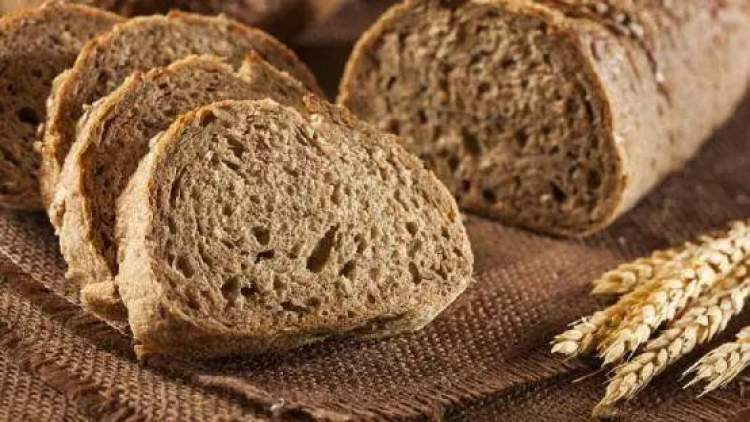Bread has a long history of consumption and is available in a wide variety. Before the 19th century, due to limitations in milling technology, common people could only consume whole wheat bread made directly from wheat flour. After the Second Industrial Revolution, advancements in new milling technology led to white bread gradually replacing whole wheat bread as a staple food. In recent years, with the heightened health awareness of the general public and improved living standards, whole wheat bread, as a representative of whole grain foods, has made a comeback into public life and gained popularity. In order to assist consumers in making reasonable purchases and consuming whole wheat bread scientifically, the following consumption tips are provided.

- Whole wheat bread is a fermented food with whole wheat flour as its main ingredient
1) Whole wheat bread refers to a soft and delicious fermented food made mainly from whole wheat flour, wheat flour, yeast, and water, with additional ingredients such as milk powder, sugar, and salt. The production process involves mixing, fermentation, shaping, proofing, and baking. The key difference between whole wheat bread and white bread lies in their main ingredients. Whole wheat bread is primarily made from whole wheat flour, which consists of the endosperm, germ, and bran of wheat. Whole wheat flour is rich in dietary fiber, B vitamins, trace elements, and other nutrients. However, the germ and bran in whole wheat flour hinder dough fermentation, resulting in smaller loaf size and a relatively coarse texture. In contrast, white bread is primarily made from refined wheat flour, which consists mainly of the endosperm of wheat, with small amounts of germ and bran.
2) Based on texture and ingredients, whole wheat bread can be categorized into soft whole wheat bread, hard whole wheat bread, and flavored whole wheat bread. Soft whole wheat bread has a fluffy texture with evenly distributed air holes, with whole wheat toast being the most common type. Hard whole wheat bread has a crust that is either hard or cracked, with a soft interior. Some varieties are sprinkled with chia seeds, sesame seeds, sunflower seeds, pine nuts, and other ingredients to enhance flavor and nutrition. Flavored whole wheat bread involves adding ingredients such as cream, edible oils, eggs, dried meat floss, cocoa, jam, and others to the surface or interior of the dough before or after baking, resulting in a diverse range of flavors.
- Reasonable Purchasing and Storage
Consumers are advised to purchase whole wheat bread through formal bakeries, supermarkets, markets, or shopping platforms, with attention to the following two points:
1) Check the Ingredients List
Firstly, check the amount of whole wheat flour added. Currently, products on the market that claim to be whole wheat bread contain whole wheat flour ranging from 5% to 100%. Secondly, look at the position of whole wheat flour in the ingredients list; the higher up it is, the higher its content. If you want to purchase whole wheat bread with a high content of whole wheat flour, you can choose products where whole wheat flour is the only cereal ingredient or is listed first in the ingredients list. It is important to note that you cannot solely judge whether it is whole wheat bread based on its color.
2) Safe Storage
Whole wheat bread with a relatively long shelf life typically has a moisture content below 30%, resulting in a drier texture. Its shelf life usually ranges from 1 to 6 months. It should be stored in a dry, cool place at room temperature, away from high temperatures and direct sunlight. It is not advisable to store it in the refrigerator to prevent it from becoming stale and affecting its taste. It should be consumed as soon as possible within its shelf life. Whole wheat bread with a relatively short shelf life has a higher moisture content, typically lasting from 3 to 7 days. It has good moisture retention and a better taste, so it is best to buy and eat it immediately.
- Scientific consumption
When consuming whole wheat bread, attention should be paid to the following three points:
1) Gradually Adapt to Its Taste
If you are just starting to consume whole wheat bread, you may first choose a product with a relatively low content of whole wheat flour. After getting accustomed to the taste, you can gradually switch to products with a higher content of whole wheat flour. If consumers value the nutrition of whole wheat bread more, they can choose products with more than 50% whole wheat flour content.
2) Moderate Consumption
Generally speaking, adults can consume 50 to 150 grams of whole grain foods such as whole wheat bread per day (calculated based on the content of whole grains/whole wheat flour), and children should consume a correspondingly reduced amount. People with weaker digestive abilities or digestive system diseases can reduce both the amount and frequency of consumption.
3) Proper Combination
When consuming whole wheat bread, attention should be paid to combining it reasonably with fruits, vegetables, meat, eggs, and dairy products to ensure balanced nutritional intake. If symptoms such as bloating or diarrhea occur after consuming whole wheat bread, or if one is allergic to gluten, it is recommended to avoid consumption.
Post time: Jan-02-2025

